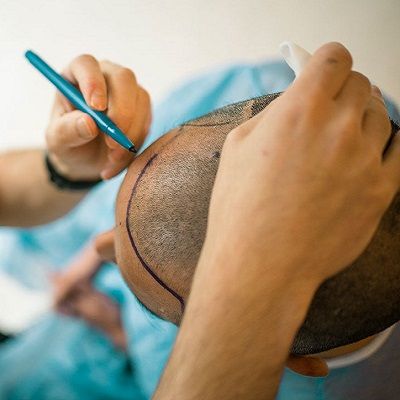
Understandably, patients are anxious to observe the development of their new hair following hair transplant surgery. The hair development process practically begins from scratch after the treatment. Therefore it is critical to wait patiently and follow proper care guidelines to give hair loss treatment in Dubai the best chance of success.
Hair Growth Stages After a Transplant:
Remember that everyone is different, and that can predict no one’s outcome with 100% confidence. Here is what you should expect:
During the first 7-10 days: Recovery:
Your physical healing will occur. You will be given detailed advice on what to do and what not to do. The scabs from your extraction punctures will begin to peel out by the end of the week. The donor area’s hair will grow neatly. Our Hair Doctor staff will often contact you to ensure that everything is progressing as planned during this period.
0-3 Months: Shedding or “Dormant Shock” Phase:
It is the most challenging aspect of receiving a hair transplant. Not only will your new hair not grow in the first three months, but it will also fall out. Your transplanted follicles will shed between 4-5 days and three weeks following the operation. If you are a Hair Doctor patient, you will not be alarmed since we have prepared you for this.
Depending on the place, the static shock might endure for a long time or a short time. The crown usually remains in static shock the longest, whereas the hairline usually grows earliest. If you’ve had your hairline restored, it’s relatively uncommon to see it come in neatly within two months after your treatment.
3-4 Months: Slow-Growth Phase:
It is when things start to get interesting. Your hair will eventually begin to come in towards the beginning of Month 4. It may appear thin and curled at first. At this point, your transplant sites may appear patchy since individual follicles are still at different phases of their development cycle. Again, if you weren’t expecting it, you may be taken aback by such wiry-looking hair. It makes all the changes to know what to expect.
4-6 Months: Phase of Real Growth:
For the majority of patients, this is the most thrilling time. From the fourth month on, you should expect rapid development. Your hair will fill in well, and you will notice a significant change from before. We check in with our patients again at the end of this period. It’s a pleasant day, as many people are surprised to view their new images contrasted with their old ones.
6-12 Months: Maturity and “Hair Busting:
Surprisingly, these fantastic results often account for about half of the predicted hair growth, with total growth completed at the 1-year mark or up to 15 months. This stage’s events are more subtle. Your hair will grow thicker, with transplanted hair eventually growing at the regular rate of 1-2 cm per month.
As you can see, it takes around four months of patience to see any actual results from your hair transplant and another six months to see those results look decent. We believe that we have given you a better understanding of what to anticipate from a hair transplant. We know we have a great team that regularly produces excellent outcomes. We also know that having unrealistic expectations may kill any attempt. It is why we value patient education so much and why the best compliment a reviewer can offer us is “everything went as planned.”
How long does a hair transplant last?
It is natural to question how long the procedure would last when considering a hair transplant. If you want the hair transplant to last a lifetime, you should get it done by an experienced and well-known hair restoration doctor.
Most hair transplants last a lifetime because healthy hair follicles are transplanted into thinning or bald regions. Moreover, factors such as the patient’s hair type, lifestyle, age, and level of hair loss can all cut down the lifetime of a hair transplant. The patient may require a few treatments to get the desired outcomes in such instances.
Hair transplants in this era are permanent, safe, and natural-looking. Consult the hair specialist in Dubai immediately to explore your hair transplant choices, regardless of your gender, age, or level of hair loss. These operations with a high success rate can restore your lost self-confidence!
Conclusion:
The timeline for hair development following hair transplantation is straightforward. Soon after, growth occurs, leading to folliculitis surrounding a four-month scar. It will also fade and replace brittle hair four months following surgery. The hair gradually thickens and darkens eight months following surgery. The patient will see the final pattern of hair growth after around eight months. Must complete all substantial modifications within a year, and the end outcome must be full hair.











